- Joined
- Mar 26, 2018
- Messages
- 2,724
OK Got a good chunk more progress done last friday.
Below is a progression of rouging in the moving vise jaw and finishing. I did not go to the same level of finishing as the bedways as It is my understanding that this is not needed for semi-static scraped surfaces.
The milled surface is broken up (blind scraping) for better blue transfer
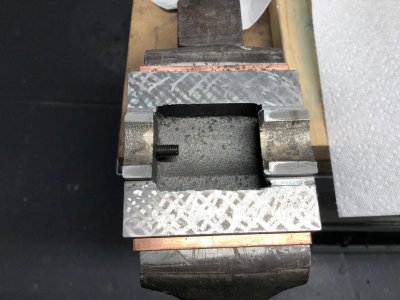
Initial contact is quite poor
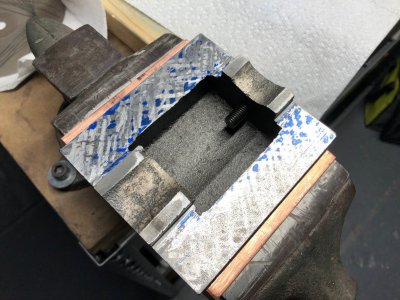
After a few more roughing passes I have contact down the length of the slides
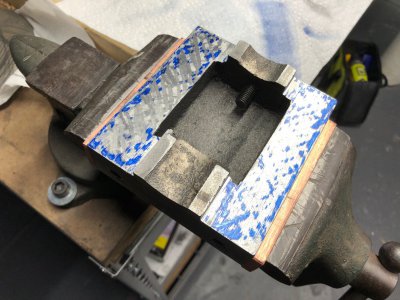
The right slide is showing much better area contact than the left, thus I scraped the high areas on the left.
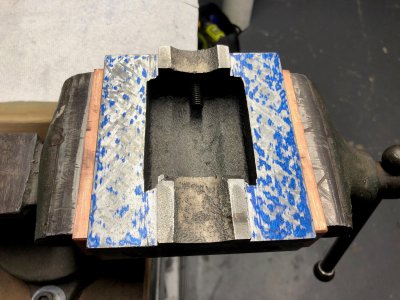
Using the bedways to print the moving jaw
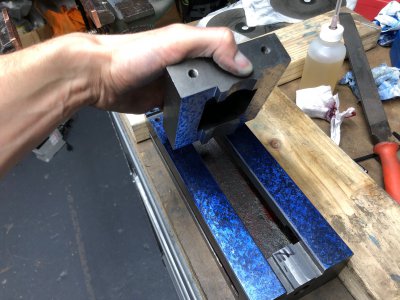
Getting better all-over contact
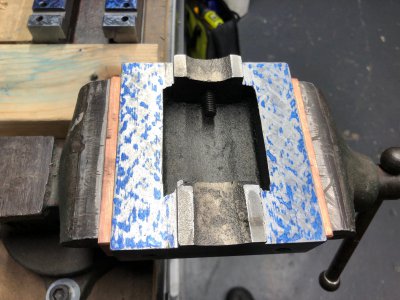
Lighter blue is helping make more educated decisions about where to scrape
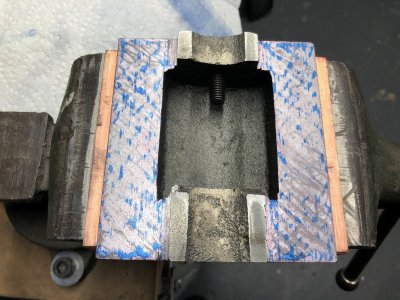
Very light bluing near the end of highpointing
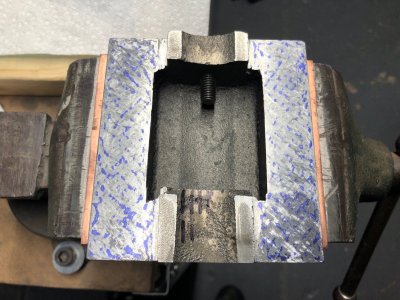
And this is where I called it done.
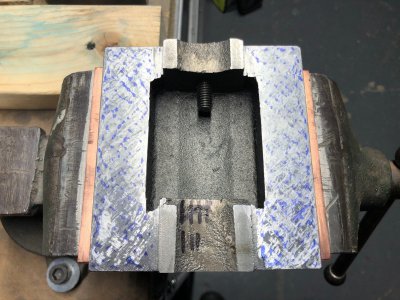
And a beauty shot of the scraped bed and moving jaw.
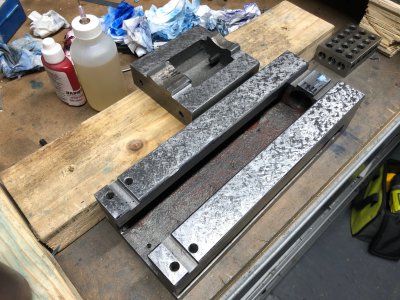
What I've learned since day 5:
Below is a progression of rouging in the moving vise jaw and finishing. I did not go to the same level of finishing as the bedways as It is my understanding that this is not needed for semi-static scraped surfaces.
The milled surface is broken up (blind scraping) for better blue transfer

Initial contact is quite poor

After a few more roughing passes I have contact down the length of the slides

The right slide is showing much better area contact than the left, thus I scraped the high areas on the left.

Using the bedways to print the moving jaw

Getting better all-over contact

Lighter blue is helping make more educated decisions about where to scrape

Very light bluing near the end of highpointing

And this is where I called it done.

And a beauty shot of the scraped bed and moving jaw.

What I've learned since day 5:
- You can rough pretty judiciously at first, I think I am too easy on it still and take a long time to get through the roughing
- Determining flatness on parts with protrusions above the planar surface is tricky, hinge test cannot be used
- The hydrodynamic bearing generated between two scraped surfaces is incredible, I totally get why we do this!
- Printing a part using another scraped part as a template feels a lot different than rubbing on a granite plate. The blue acts like grease if used in anything but the thinnest layers and smears a LOT compared to the granite. Also it seems to develop less obvious burnished spots which is annoying when trying to highpoint.

